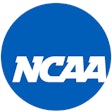
Graduation Rate Resources
- 2021 Division I Graduation Rate Trends
- 2021 Division II Graduation Rate Trends
- 2021 Division III Graduation Rate Trends
- Graduation Rates Research
Searchable Databases
Division I student-athletes continue to graduate at their highest rate in the 20 years the data has been tracked, according to the latest Graduation Success Rate data announced today. The overall single-year rate held steady at last year's rate of 90%.
Figures released today reflect graduation numbers among student-athletes who entered school in 2014. When the Graduation Success Rate was created more than two decades ago, then-NCAA President Myles Brand set an aspirational goal of 80%. Student-athletes first surpassed that goal with the release of the rates in 2011.
NCAA President Mark Emmert congratulated student-athletes on their continued academic success.
"When the initial draft of a new NCAA constitution was unveiled last month, committee members emphasized academics as the top principle on which college athletics is based," Emmert said. "Today's announcement proves that college athletes take seriously their status as students. We celebrate them and their achievements and will continue to support them as the NCAA modernizes its rules to benefit them."
College athletes who compete in FBS football held their single-year rate steady at 81%. Women's basketball student-athletes increased by 2 points to 94%.
Two decades of growth
Since its inception 20 years ago, Graduation Success Rates for Division I student-athletes overall have increased 16 points.
Rates for Black student-athletes during that same period increased 24 points to 80%, while Hispanic/Latinx student-athletes increased 24 points to 88% and white student-athletes saw a 13-point increase to 94%.
In men's sports, 20 years of increased academic success led to an 18-point increase in FBS football and a 28-point increase in men's basketball. Significant gains were also made in baseball, with a 23-point increase to 88%, and in men's wrestling, with a 24-point increase to 86%.
Women have continually performed well in graduation rates. Over the course of the past 20 years, the largest increase in graduation rates occurred in women's basketball, which saw a 14-point increase to 94%. Softball rates increased 12 points to 94%, and women's tennis and women's volleyball have seen 11-point increases each, to 97% and 94% respectively.
More are graduating
Since the creation of the GSR, Division I members have adopted academic rule and policy changes intended to improve the academic performance of student-athletes. Those changes have had a clear and resounding impact: over the past 20 years, 37,450 more college athletes graduated than would have had the GSR remained at 74%, which was the GSR rate the year it was introduced.
In 2021 alone, the increase accounts for 3,945 more student-athlete graduates.
"Division I student-athletes are succeeding in the classroom, and we celebrate their achievements along with them. The Committee on Academics will continue to work to develop rules and policies that support that success," said Committee on Academics chair Dianne Harrison, president emerita at California State University, Northridge. "We want every student to achieve their full potential academically and earn their degree."
The GSR — which more accurately reflects mobility of college students beyond what the federal graduation rate measures — was created by the Division I Board of Directors in 2002. The federal rate counts as an academic failure any students who leave their initial school, even if the students transfer and enroll at another school. Also, the federal rate does not include students who enter school as transfer students.
The GSR formula removes from the rate student-athletes who leave school while academically eligible and includes student-athletes who transfer to a school after initially enrolling elsewhere. This calculation provides a more accurate measure of student-athlete success.
Even when using the less-inclusive federal graduation rate, college athletes graduate at a higher rate than the general student body. The Division I student-athlete rates held steady at 69%, while the general student body dropped 1 point to 68%. In the past 30 years, federal graduation rates for college athletes have also skyrocketed. Overall, student-athletes' federal rates have increased 17 points to 69%, driven by a 25-point increase by both Black and Hispanic/Latinx college athletes to 60% and 68% respectively.
DII student-athletes increase graduation rates
Four-year average Academic Success Rate rises to 76%
Division II graduation rates increased to 76%, a 2-point increase from last year's rate, according to the most recent Academic Success Rate data.
Similar to Division I's Graduation Success Rate, the Division II ASR includes transfers into a school in the calculation and removes likely transfers out who left school while academically eligible. The ASR also includes the more than 31,000 nonscholarship student-athletes who were enrolled in the four years covered in the most recent data.
"The continued increase in four-year graduation rates further demonstrates that Division II student-athletes are exemplary students and athletes, who are dedicated to excelling in the classroom, in their sports and in their communities," said Terri Steeb Gronau, NCAA vice president of Division II. "This success also demonstrates how committed our educators and administrators are to fulfilling the division's Life in the Balance philosophy, by enhancing the student-athlete experience academically and athletically."
Even when using the less-inclusive federal graduation rates, student-athletes are outperforming their peers in the general student population by 8%. For Division II athletes, the federal rate increased 1 percentage point to 60%, and the general student body increased 1 point to 52%.
Like the NCAA GSR in Division I, the ASRs in Division II and Division III were formed after presidents and chancellors called for the Association to develop a measure of graduation success that better reflects transfer patterns and the population of student-athletes in higher education.
Division III student-athletes achieve greater academic success
Four-year average Academic Success Rate rises to 88%
For the second year that Division III required the submission of Academic Success Rates and federal graduation rates for student-athletes, member schools rose to the occasion, reporting marks higher than the first year of mandatory reporting.
The national four-year average ASR for Division III increased to 88%, a 1-point increase from last year's rate.
Division III's Academic Success Rate is similar to Division I's Graduation Success Rate and Division II's ASR, as it includes transfers in the calculation and accounts for students who left school while academically eligible. Division III is now in its 12th year of collecting student-athlete graduation rates.
Even when using the less inclusive federal graduation rates, Division III student-athletes outperform their peers in the general student body. The four-class average federal rate for athletes was 69%, and the federal rate for the overall student body was 67%.
"I applaud Division III member schools and student-athletes for their hard work, in the classroom and athletically," said Louise McCleary, interim vice president of Division III. "I also thank Division III institutions for their continuous support of the student-athlete model that allows students to achieve academic excellence, provides a competitive athletics environment and ensures our student-athletes achieve holistic success."
At the 2019 NCAA Convention, the Division III membership passed a proposal requiring all schools to submit student-athlete graduation rate data to the NCAA on an annual basis. 2021 marks the second year of required reporting.




































